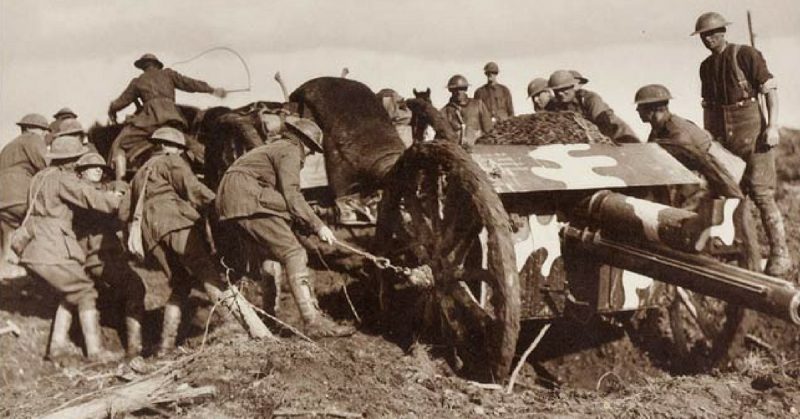Artillery was one of the most significant elements in WWI. The shattering bombardments that preceded infantry assaults led men to dig deeper and deeper into trench lines and bunkers, creating the static warfare that endured for most of the four-year conflict in the west.
Heavy artillery firing from behind the lines was important, but a lighter, more localized form also played a huge part: field artillery.
Field Artillery
Advances in weapon technology had taken artillery down two different but related paths in the years leading up to the war.
On the one hand, there were the heavy artillery batteries. They were organized at levels above the division. They hurled shells miles across the countryside, allowing artillerists to strike their enemy while safely out of danger from their targets. In its extreme form, it led to weapons such as the German Big Bertha guns and the Austro-Hungarian Skoda howitzers that smashed Belgian fortresses in the opening battles of the war.
On the other hand, there were the field artillery pieces. They looked old-fashioned with pieces small enough to be drawn by horses and brought close to the front lines, but they were sturdier, powerful, and sometimes lighter than their predecessors. They were allocated at the level of divisions. They accompanied infantry and cavalry formations on the march and in their positions on the front.
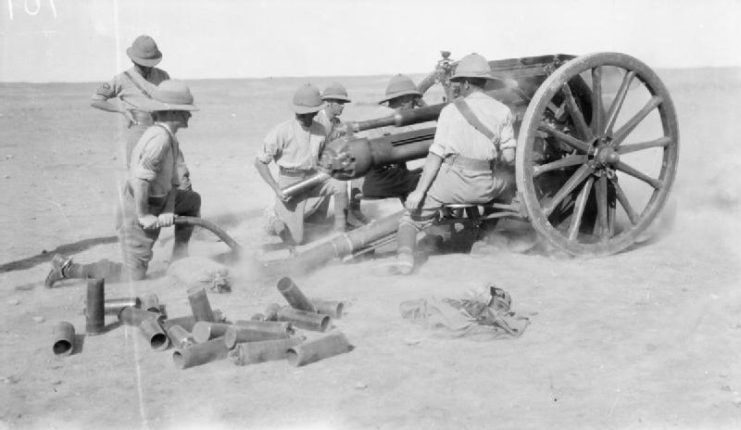
Resolving Recoil
The most significant advance in artillery in the preceding decades had been the solution of the recoil problem.
Previously, there had been no way of avoiding recoil when a gun fired. Fixed pieces could be held in place, but field artillery always rolled back when it was fired.
In the 1890s, a retired French officer named de Port, building on German developments, created the first effective solution. A system of oil, air, and pistons absorbed the recoil from the barrel and then returned it to its position.
It made field artillery much more effective. It could be used with protective screens for the crew, as it would stay in place. It could also be prepared and fired quickly. As it did not roll backward, there was no need to return it to its position after firing.
In WWI, a growing number of weapons had anti-recoil systems.
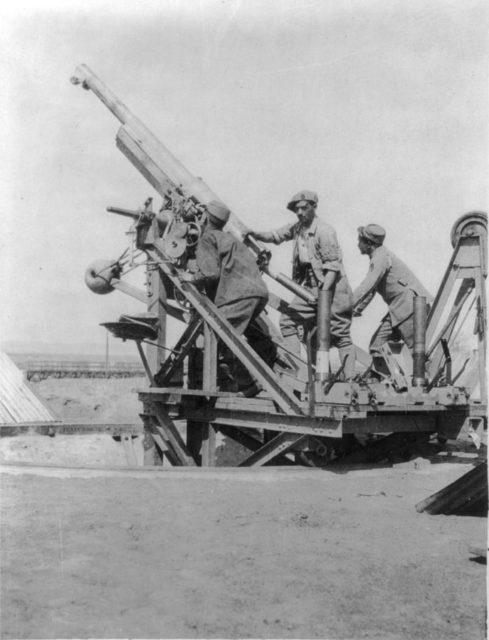
The Weapons
There were two main types of field artillery – guns and howitzers.
Guns were closer to the canons of earlier warfare. Their long near-horizontal barrels fired rounds at a high velocity on a relatively flat trajectory. They shot directly at enemy positions and formations that lay within sight.
Howitzers were mortar-style weapons. They were identified by their steeper upward angled shorter barrels. Their rounds were not fired at such a high velocity. Instead, they were propelled in an arcing curve landing among the enemy from above. In that way, they could fire indirectly, getting around cover which was particularly important as it enabled rounds to be fired into enemy trenches.
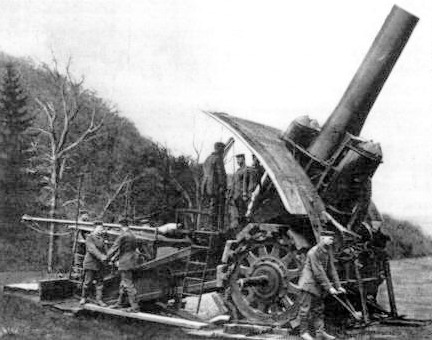
The Shells
Two features defined the shells launched from those weapons – their size and what sort of ammunition they contained.
Many countries measured the size of shells by the diameter of the bore of the gun they were made to fire out of. A typical French field gun of 1914, the Model 1897, fired a 75mm shell.
The British, on the other hand, defined the size of artillery by the weight of the shell. Their leading field artillery of the early war was the Mark I 18-pounder.
The two types of ammunition used by field guns were shrapnel and high-explosive.
High-explosive rounds were packed with as much explosive as possible and fitted with an impact fuse. When they hit a hard target such as a building or solid ground, they detonated with incredible force. They were better for destroying inanimate objects. Both the strength of the blast and the splinters from their casing were deadly to troops. Their biggest problem was hitting soft, muddy ground which did not trigger the detonator – a common problem on the churned up terrain.
Shrapnel rounds were designed to kill infantry. Their timed fuses were designed to trigger in flight just above enemy formations. Instead of being packed with explosives, they had a smaller charge surrounded by metal balls. The explosion sent them scything through flesh.
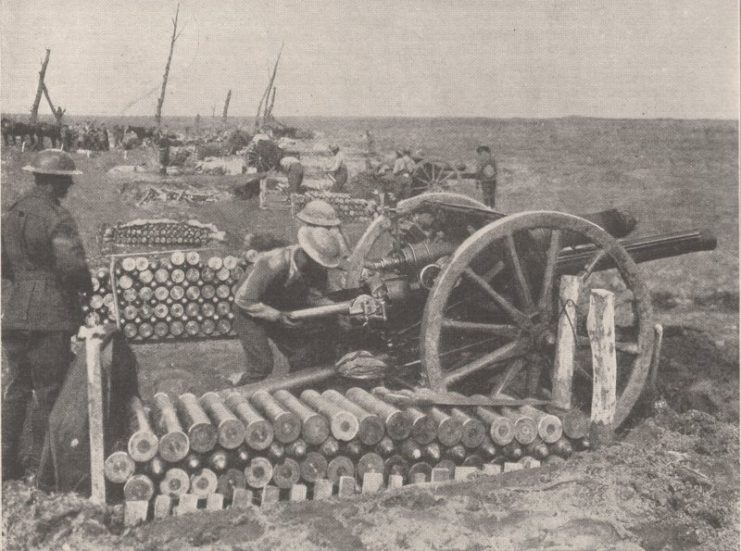
Rate of Fire
The rate of fire on field artillery, although superior to previous eras, still varied hugely from weapon to weapon.
The French 75 gun, built around de Port’s phenomenal recoil-dampening system, had an incredible rate of fire. A well-trained crew could use it to fire 25 rounds per minute – one nearly every two seconds.
The British 18-pounder was superficially similar to the 75, but its performance was less. It fired only a third as fast as the French gun, launching up to eight rounds per minute.
It was still a lot of fire-power. Firing a shrapnel shell every eight seconds, a British gun team could wreak carnage on a German formation.
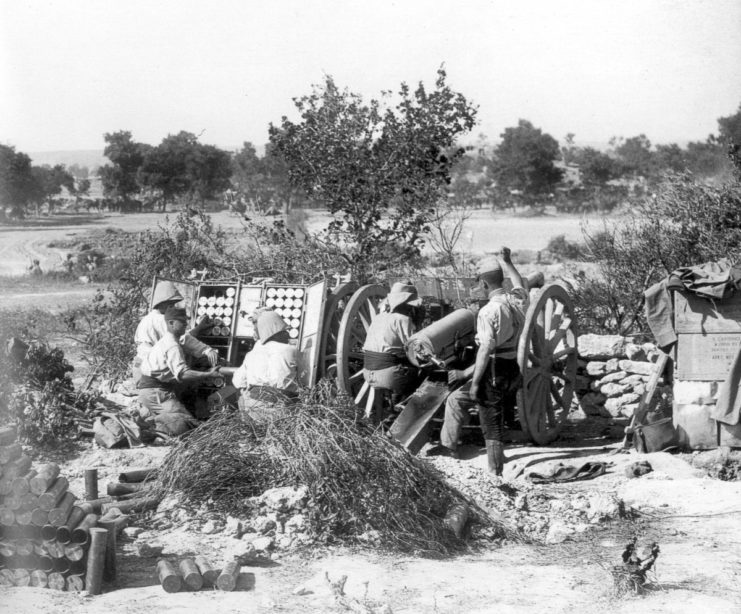
Field Artillery in the Field
Field artillery was designed for mobile warfare. The static nature of the Western Front made it less useful than its advocates expected. Soldiers were protected from shrapnel by their trenches. High explosive rounds proved inadequate to pierce deeply dug concrete bunkers.
Improvements were made, such as fuses to help the shells destroy barbed wire. Field artillery was still used heavily throughout the war. Of 1,600 British artillery pieces opening up the Battle of the Somme in 1916, 1,200 were a field or medium gun. The Germans used 3,965 field artillery pieces in the launch of Operation Michael two years later.
Field artillery had problems, but it was a vital part of the war.
